
| VISIT US |
Bergdala glastekniska museum
|
|

|
||
|
För andra språk erbjuder vi/ for other languages we offer
- Swedish pressed glass - Glass melting furnaces - Glass pots - Pressing, a general description - "Baking pancakes" - Centrifuging - Vacuum flasks |
|
Pressing glass - what does that mean?First of all, this is a so called "good question" – you would probably get a different answer from every person you ask. There is a possible definition later on this page. |
|
|
Long before the blow-pipe was invented there were patterned glass vessels. Should they be considered "pressed"?
Later there were many examples of vessels with seals: an extra blob of glass was added to the outside, and a seal was stamped into it.
Then there is the word itself: from (at least) the 1700s there have been mentions of "pressed" glass in Swedish
texts.
|
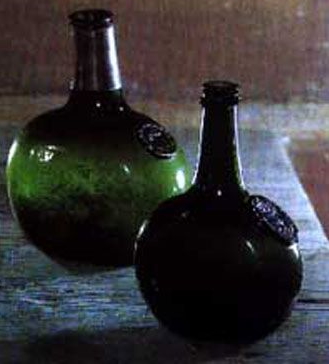
|
||
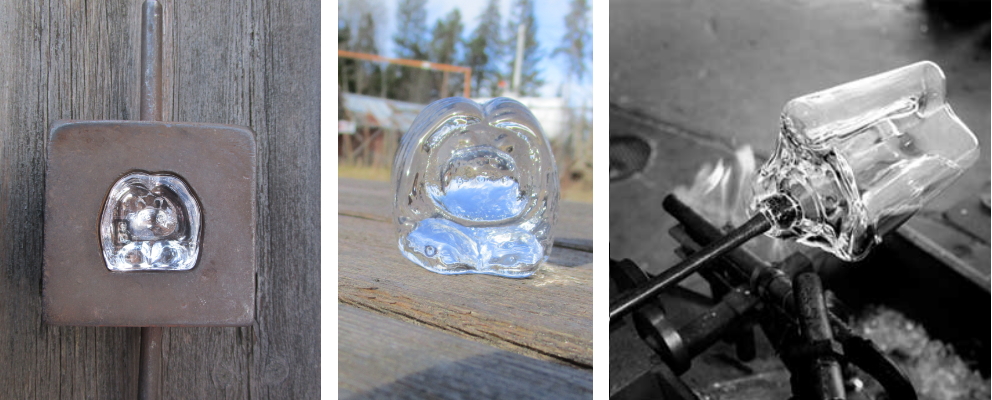
|
|||
|
But why so much text about what is not pressed?
Here is a possible definition (slightly modified from the monograph Pressed glass):
|
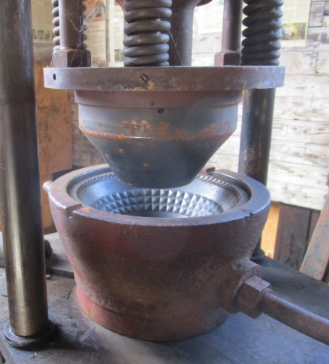
|
||
Presses, as we understand them todayThe early 1800s in the USA: glass presses were invented, with the idea of making production more efficient. There were several patents filed from 1825 and for 5-10 years after. Presses were introduced in Europe, and the news soon reached Sweden. According to several stories (unfortunately not fully supported by facts) one Joachim Åkerman was sent out scouting in 1834. He came back, but with what? a whole press, a sketch or a drawing, a model... - the stories vary. But: in 1836 Reijmyre glassworks was the first glassworks in Sweden to get a hand-press (with the help of said Åkerman). Read more about the history on the page Swedish pressed glass.
Glass presses have come in many different models.
Later presses were pneumatic, to save the muscles of the "presser". |
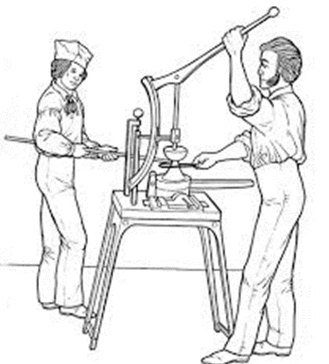
|
||
Different ways to use the technique:Press moulds were (still are) expensive tools.They are usually made in cast iron, partly to keep the temperature (the mould has to be ca 400oC to give the best result), but also to get a long life. In the beginning, pressed pieces often had all-over patterns - this disguised bad glass: threads, bubbles and other faults were not as visible if the whole piece was patterned. The first mould were, of course, simple bowl-moulds, but soon the idea with the open-and-shut moulds became a reality. For such moulds it is very important that the parts fitted exactly. If there is the smallest gap the seams will be very visible. The metal (the hot glass) will wear the moulds, so they had to be taken good care of, by polishing and lubricating. Sometimes the pressed pieces were "fire polished" to minimize the visible seams. There were many clever ways to use one mould to make different products: the "bowl" coming from the press could be used as is; it could be re-heated and flared to make a plate (or other forms); could be given a stem - it could even be given different stems, and thus be sold as different products. Sometimes the pressed pieces were used as blanks for cutting; it was faster, and there was less need to cut away a lot of material to get the deep cuts. But not all pressed pieces were ornate or complicated: at Kosta they made pressed roof tiles, for example. Here in Bergdala, too, some very simple pieces have been pressed. The rectangular tiles in light blue and yellow (in the exhibition) are pieces for one of the (at the time) biggest public artwork: the 150 metres long decoration, named "Klaravagnen", at the oldest part of the metro station T-centralen in Stockholm. The artwork was designed by Erland Melanton and Bengt Edenfalk, most of the tiles were made at Skruf (but many of them were made here). The artwork was completed in 1958 (sources En värld under jord, Spårvägsmuseet in Stockholm.) |
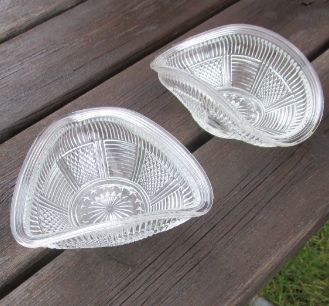
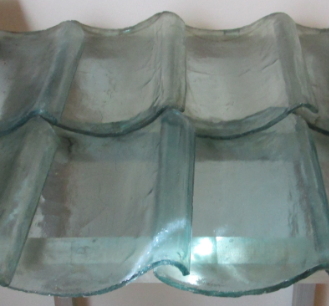
|
||
Pressed glass — but surely, that isn't made any longer?!?Many people think that the heyday of pressed glass was the 1920-30ies — but that depends on one's point of view: today presses are fully automated for household goods, but they are still used in the art glass industry – Målerås do press several items by hand.The "fixed mould blowing" is still in use, as we saw above, for art glass but also in the fully automated factories which make bottles, jars, jugs. Look at the bottom: most such glass has some "blown-in" marks - logos, size... Further reading, with more pictures, at Swedish pressed glassAbout a different technique to press without a ring: "baking pancakes"Here you can read about the two presses we show in the museum. |
|||
|
Sources:
|
|||